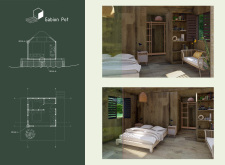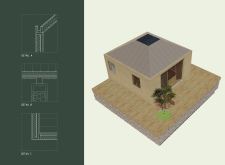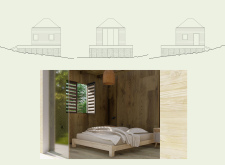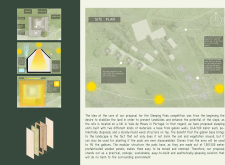5 key facts about this project
The design located in Vale de Moses, Portugal, integrates sustainable living spaces within a hillside environment that is susceptible to landslides. The focus is on creating individual sleeping pods that balance functionality with environmental sensitivity. This approach allows for a thoughtful connection between the built structures and the surrounding landscape.
Site Organization
The layout includes different functional areas such as circulation paths, sleeping units, a terrace overlooking the valley, a bathroom, a storage area, and a lounging space. Each element is placed to promote movement and interaction among spaces. The terrace is an important feature, connecting users with nature while providing views of the valley's beauty.
Water Management and Energy Use
Sustainable practices are woven into the design through a rainwater collection system. This system gathers rainwater for use in toilets and bathing, promoting water conservation. Solar panels also contribute to energy needs, supplying power for lighting and appliances. These features highlight a commitment to minimizing environmental impact while improving the quality of life.
Materiality and Construction
The sleeping units are supported by gabion walls that stand 0.40 to 1.00 meters high. These walls help stabilize the land and protect the soil and plant life around them. They are filled with stones sourced locally, which reinforces the design's ecological focus. Above these walls, prefabricated wooden panels, measuring 1.00 by 3.00 meters, form the modular sleeping pods. This choice of materials supports sustainability and allows for easy adjustments as needs change.
Visual Integration
The orientation of the pods is designed to take advantage of light and scenic views toward the southwest. This design focuses on enhancing the visual experience for users, encouraging outdoor activities and relaxation. With an emphasis on sightlines and connections to the landscape, the sleeping units blend thoughtfully into the natural setting of Vale de Moses, allowing visitors to appreciate the surroundings fully.






















































